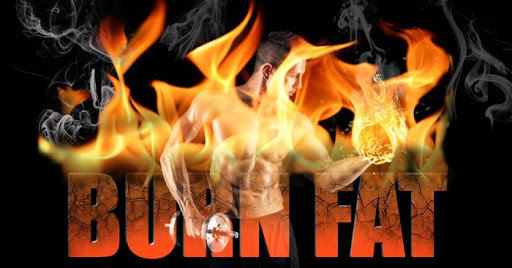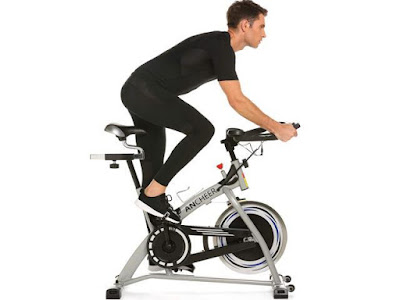Top 10 Rules and Tips For Weight Loss Exercise
If blasting body Weight loss and fat burning calories is one of your main exercise goals, these 10 Weigth loss exercise tips will ensure you get the most out of every fat burning workout minute.

Don't be fooled by the so-called fat-burning zone. This is the misguided notion that working at a lower intensity is better for fat burning than working at a higher effort level (say, for example, walking instead of running.) The harder you exercise, the more calories you will burn and it is this that really counts when it comes to Weight loss.
Choose your weight loss exercise carefully
There is no such thing as the 'ultimate' calorie-burning activity. Energy burned is dependent not just on the activity itself, but on how much effort you put in, how skilled you are at it, how long you do it for, and how often. So choose a fat burn exercise that you are going to do regularly and consistently. That means an activity that you actually enjoy (unless you want your workouts to involve untold misery and boredom!) and one that is practical and accessible.

Exercise larger muscles for greater calorie burn
Serious fat-burning activity uses the large muscle groups of the body – the thighs and bottom, chest and back. The greater the overall recruitment of muscle, the higher the calorie expenditure. So in your gym workouts, you are much better off using, say, the rower than one of those arm-cranking machines for maximum calorie burn.
Sustainable exercise development
To fire up the calorie furnace, fat-burning activity has to be sustainable for a reasonable period. So while skipping is great exercise, it's not much use if you can only do it for three minutes. The American College of Sports Medicine recommends 20-60 minutes per session, three to five times per week. It doesn't have to be continuous effort.

Interval training to maximise calorie burn
Interval training, in which you mix hard efforts with bouts of recovery, is one of the best ways of maximising calorie expenditure, improving aerobic fitness and making use of limited time. To get the most out of an interval session, ensure that you work outside the comfort zone on the efforts and ease right off during the recoveries. Try a 2:2 rest/work ratio to start with.
Carry the exercise load
Activities that are weight loss, such as walking and running, use more calories than those in which your weight loss is supported (such as swimming or cycling), simply because you have to shift your own body weight loss against gravity.
Running on empty?
You may have heard that exercising on an empty stomach in the morning burns more fat. It is true that the body has to rely on fat stores if you don't break the overnight fast, but then again, the lack of a ready energy supply may mean that you don't work out for as long, or as hard as you may have otherwise done.
Go for the afterburn
One of the best things about exercise is that the fat-burning benefits continue long after you’ve got out the shower. This 'afterburn' (increased calorie expenditure) is far greater following exercise at 75 per cent of maximum heart rate, or higher – another reason to eschew those low-intensity workouts!
Increase exercise intensity
If you want to keep seeing results in your weight loss programme, you must keep increasing the intensity. This isn’t the same as increasing your effort, because as you get fitter, your body will be able to cope with increasing demands. If you rest on your laurels, the benefits will begin to tail off.
Keep moving to burn fat
Maximise your daily fat burning by moving! Researchers at the Mayo Clinic have found that leaner people tend to stand and move more than overweight people in normal daily life. Their ‘non-exercise activity thermogenesis’ (NEAT) was as much as 350 calories higher each day. So don't just sit there, wiggle your toes, shake a leg, get up regularly and move your body.
Here are some typical calorie burns for a number of activities. Bear in mind these values will differ from individual to individual are intended as a rough guide:
| Typical calorie expenditure | 9 stone (57kg) woman | 11 stone (70kg) man |
| Running (calories per hour at 8-minute mile pace) | 720 | 913 |
| Swimming (calories per hour for continuous laps) | 630 | 730 |
| Uphill walking at a 10 per cent gradient (calories per hour) | 590 | 694 |
| Rowing (calories per hour at a moderate pace) | 540 | 611 |
| Cycling (calories per hour at 12-14 mph pace) | 500 | 584 |
| Jogging (calories per hour at 12-minute mile pace) | 440 | 511 |
| Walking (calories per hour at 15-minute mile pace) | 252 | 365 |
Check my other article based on 1,200-calorie vegetarian weight loss meal plan, we make sure to include plenty of filling foods so you feel satisfied-not starved-while cutting calories. Protein-rich beans and tofu, high-fiber whole grains, fruits and vegetables and healthy fats, like nuts, help to keep you feeling energized all day long (get our list of Best Vegetarian Protein Foods to Eat). Coupled this healthy plant-based meal plan with daily exercise and you're on track to lose a 1 to 2 pounds per week.
Day 1
Breakfast (310 calories)
- 3/4 cup oatmeal cooked in 1 1/2 cup water
- 1/3 cup raspberries
Top oatmeal with raspberries and a pinch of cinnamon.
A.M. Snack (95 calories)
- 1 medium apple
Lunch (345 calories)
- 1 serving Whole-Wheat Veggie Wrap
P.M. Snack (80 calories)
- 1/2 cup nonfat plain Greek yogurt
- 1/4 cup sliced strawberries
Dinner (394 calories)
- 1 serving Mushroom-Quinoa Veggie Burgers with Special Sauce
Daily Totals: 1,224 calories, 45 g protein, 173 g carbohydrates, 33 g fiber, 43 g fat, 1,269 mg sodium.
Rule #1: Burn more calories than you eat
Weight loss is simple: if you burn more calories than you consume, you’ll drop pounds. But too many guys still underestimate how much they eat and overestimate how many calories they burn. Avoid the guesswork and keep a food for a week. Count up exactly how many calories you’re averaging. You may be surprised.
Now start eating 500 fewer calories per day—that’s about the amount in one meal. Of course, we’re not saying to cut out dinner. But cut back on your portion sizes and limit your carbs. Any junk or processed food you’re eating should be the first to go.
Rule #2: Eat more protein
Of all the foods you eat, the high-protein ones are the most important for losing fat. First, they keep you feeling full, which prevents overeating and needless snacking. Second, they boost your calorie burn throughout the day because protein takes more energy to digest than carbs or fat. Third, when accompanied with weight loss training, a high-protein diet prevents muscle loss that might otherwise happen when you suddenly cut calories.
Eat at least one gram of protein per pound of your body weight and get your protein from whole sources like lean meats, eggs, fish, and protein powders.
Rule #3: Eat more healthy fats
Fat in foods doesn’t necessarily add up to fat around your waistline. Animal fats, real butter, coconut oil, nuts, and avocados help reduce hunger and maintain optimal testosterone production. Without enough fats, your results will decline (and so will your libido).
Eat more healthy fats and cut back on carbs, which can spike blood sugar and elevate your insulin levels, leading to more fat storage. Get at least 25% of your calories from good sources of fat and avoid artificial trans fats, which have been linked to numerous health problems like heart disease.
Rule #4: Get stronger
Many people still think the key to fat loss is cardio. And while cardio can help you burn a few calories, it does nothing to develop the muscles underneath your fat (the ones you want to reveal in the first place). Too much cardio along with a caloric deficit can also cause you to lose muscle and make you weaker.
Even when your goal is to be smaller, you still need to lift heavy and build strength. Heavy weights help you maintain and even add muscle mass, improving your body composition. Each week, train using big exercises like squats, deadlifts, and presses for sets of 4–8 reps.
Rule #5: Sleep at least 7 hours a night
Cutting back on sleep increases levels of cortisol, a stress hormone, which causes fat storage. In a study of more than 6,000 participants, Japanese researchers found that shorter amounts of sleep were associated with higher BMI levels and larger waistlines in men. Sleep deprivation also interferes with recovery and growth hormone production.
Get at least seven hours of uninterrupted sleep every night. If you have trouble sleeping, stop drinking caffeine after mid-day, limit your alcohol consumption (which ruins sleep quality), and create a pre-bed ritual to get your body and mind ready for sleep.
Contact
There are more rules for weight gain or weight loss and about health and fitness. if you take any other information please contact on email- hubmyfitness@gmail.com this is business email for this site. and we provide other program regarding weight gain and weight loss workout programs.


Comments
Post a Comment